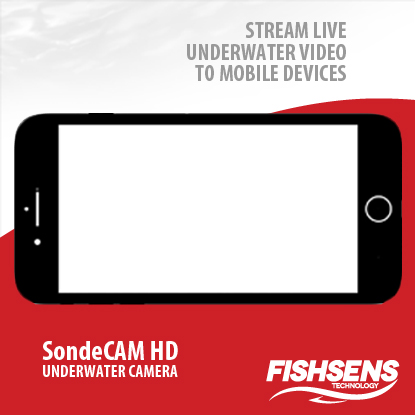Monitoring Applications
Environmental monitoring applications are essential to generating information about the quality of the environment around us, including whether it is improving, worsening, or staying the same. The kind of data environmental monitoring applications produce assist in decision making, both by governments and private actors. Of course policymakers need accurate, reliable information from applied environmental monitoring, and so do municipal engineers, public health experts, first responders dealing with environmental emergencies, farmers, foresters, hunters, and recreational wilderness users all rely upon these applications.
Application Guides:
- Monitoring Turbidity at Dredging Sites
- Monitoring Dissolved Oxygen at Hydropower Facilities
- Monitoring Scour at Bridges and Offshore Structures
- Temperature Profiling in Lakes
- Inland Lake Monitoring
- Stream and River Monitoring
- Flood Warning Systems
The Environmental Monitor magazine highlights there applications and shares the results and experiences of research scientists from around the world. Application articles are available for the following segments:
Creating an Environmental Monitoring Plan
Designing environmental monitoring plans involve choosing the right starting point and setting targets against it so that progress can be reliably evaluated. Those targets may measure compliance with environmental regulations, effectiveness of enforcement actions, or merely changes over time. Critical to any effective environmental monitoring application is a strategic, coordinated vision of key factors:
what will be monitored;
how various applications and systems for monitoring the targets fit together; and
how the user plans to report or use the information.
Well-designed environmental monitoring applications can help lower the costs of environmental management programs by narrowing the focus, identifying which problems are most pressing, and enabling more effective targeting of resources. On-the-ground applications for environmental monitoring can be enhanced by modeling.
Generating High Quality Data from Applied Environmental Monitoring
Ensuring quality and best practices at each step within the monitoring process helps produce reliable, high-quality results. Various authorities have identified what makes statistical data robust and reliable. These same qualities can help us evaluate environmental monitoring applications as we customize them for each use.
Accessibility: Accessible information is easy to get, available at a reasonable cost, presented in a format that people can access, and transparent to the intended audience.
Accuracy: Accurate information describes whatever it was designed to measure correctly, at the current state of the art.
Coherence: Coherent information uses standard methods, classifications, and concepts, and can be combined within a shared analytical framework with other related information collected at other times.
Ease of interpretation: Ease of interpretation is typically achieved by making supplementary information available that helps explain the accuracy of the statistical information; the methods of data collection and processing; and the underlying classifications, variables, and concepts.
Relevance: Relevant information elucidates issues that are important to users.
Timeliness: Timely information is available as soon and as close in time to measurement as possible.
Although none of these factors is controlling when it comes to assessing an environmental monitoring application, all may influence an assessment of its quality.
Uses of Applications in Environmental Monitoring
Environmental monitoring is central to understanding how the quality of our environment is changing. Information gathered through environmental monitoring is essential for data-driven decision-making. Of course this affects policymakers, but this also affects many organizations and individuals outside the government:
Public health officials and other healthcare providers need information about both short-term and long-term environmental impacts. For example, the short-term environmental issue of poor air quality affects the ability to treat patients with asthma and the need to issue smog advisories. The long-term environmental issue of toxic substances in groundwater may also be relevant to healthcare workers.
Municipal engineers must know about potential toxins in water sources so they can treat them, and potential water level maximums so they can design flood control systems. Insurance actuaries also need to understand environmental risk.
First responders must understand the nature of toxic events so they know how to respond and treat survivors, and how to use safety equipment effectively.
Farmers need to understand nutrient levels in surface water so they can assist with runoff management while keeping their land fertile.
Industrial concerns must monitor the environmental effects they have on their surroundings to ensure regulatory compliance and worker safety.
Best Practices in Environmental Monitoring
The most successful environmental monitoring applications share several traits:
They are well-coordinated with other applications and systems monitoring the same areas;
They are the result of integrated efforts on behalf of all interested partners;
Quality control is part of the design and the tools reflect the state of the art;
Reports are designed to inform, to be clear, and to be useful; and
Resources used in the monitoring effort are used efficiently.
Thoughtful design coupled with careful management goes a long way in environmental monitoring applications. With that in mind, here are some best practices for environmental monitoring applications:
Design of monitoring applications should address system objectives, monitoring targets, the uses of the data, the involvement of stakeholders, and what indicators to prepare. The parameters for timing and geography, such as density, frequency, location, and timing of monitoring stations, should be determined in advance.
Implementation strategies including methods for sampling should be documented and tested. All personnel should be fully trained on all strategies and methods. Alternative techniques should be in place should problems arise that render original plans unworkable.
Data collection techniques should be applied according to established, documented protocols. Records of all data collection should be kept in a consistent way. All samples and records should be archived.
Quality control is important. To ensure high data quality, apply tested techniques consistently. Note any aberrations. Use established data quality controls depending on what you’ve sampled or monitored.
Synthesis and data analysis should adhere to any industry or scientific standards in place. Data should be summarized and converted into graphs or maps. Calculate indicators for comparison with results from other locations and sampling times. Use techniques that are statistically sound.
Communication and reporting should be transparent and consistent. Describe data thoroughly and include a discussion of limitations.
Evaluations and audits of the monitoring application should focus on both process and outcome, whether objectives were achieved, any additional questions raised by the application, and any improvement opportunities.





